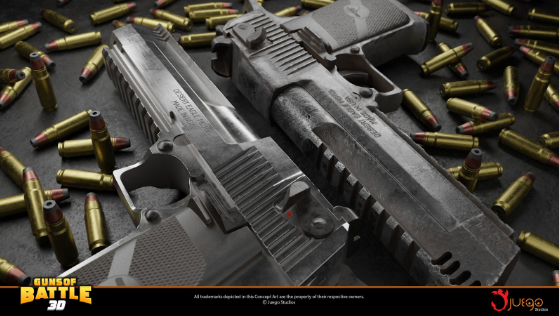When you sit down to play a modern video game, it’s easy to be mesmerized by its graphics—the lifelike environments, detailed character models, and cinematic cutscenes. What players often don’t see is the massive machinery behind the scenes: a collaboration between an AAA game art studio and a game development studio working in sync to bring imagination to life.
This partnership is where art pipelines become the unsung heroes. They aren’t just about creating pretty visuals; they’re about accelerating production, ensuring consistency, and allowing developers to ship high-quality games within deadlines. In this post, we’ll break down how these pipelines work, why they matter, and how collaboration between specialized art teams and game developers is reshaping the industry.
Why Art Pipelines Matter in Modern Game Development
Think of an art pipeline as a carefully designed assembly line. From concept sketches to textured 3D models to fully animated characters, each stage has its own specialists, tools, and workflows. If this pipeline isn’t smooth, production stalls.
For AAA-level projects, the stakes are even higher:
- Budgets run into millions of dollars. Any bottleneck can burn through timelines and costs.
- Quality expectations are sky-high. Audiences expect cinematic detail and seamless immersion.
- Teams are often global. Artists, animators, and developers may be spread across different countries, making coordination vital.
This is where the alignment between an art studio and a development team becomes a game-changer.
The Symbiosis of AAA Art Studios and Game Development Studios
An AAA game art studio specializes in creating visuals—characters, props, environments, VFX—that don’t just look beautiful but also meet the technical constraints of the game engine. On the other hand, a game development studio focuses on gameplay systems, coding, mechanics, and overall integration.
When both sides collaborate through a clear pipeline:
- Artists know the technical requirements from the start.
- Developers get optimized assets that won’t break performance.
- Feedback loops shorten, reducing costly reworks.
In essence, it’s like architects working hand-in-hand with civil engineers—the art defines the vision, while development ensures it stands strong in the real world.
Key Stages of an Accelerated Art Pipeline
So, how does this pipeline look in practice? Let’s break it down into digestible phases:
1. Concept Art and Pre-Production
Everything begins with blue-sky thinking. Concept artists sketch out characters, worlds, and moods. At this stage, collaboration is key—developers weigh in on feasibility while artists push creative boundaries.
2. 3D Modeling and Asset Creation
Once concepts are approved, 3D artists create detailed models. High-poly versions capture cinematic beauty, while low-poly, optimized models are prepped for gameplay. Specialized sculpting and texturing tools like ZBrush and Substance Painter dominate here.
3. Rigging and Animation
Static models don’t tell stories—animation does. Rigging artists set up digital skeletons, while animators bring lifelike motion to characters, weapons, or even a fluttering flag. Collaboration with developers ensures animations align with gameplay mechanics.
4. Integration with the Engine
Assets move into engines like Unreal or Unity. This is where developers stress-test assets for performance. Does the character run smoothly on consoles? Do textures load efficiently on mobile? Pipelines that account for these checks early on save weeks of troubleshooting later.
5. QA and Iteration
Finally, everything is tested for glitches, frame drops, and consistency. Here, feedback loops tighten, and both studios work side by side to polish the experience.
How Pipelines Accelerate Production
A well-structured art pipeline isn’t just about steps—it’s about speed. Here’s how:
- Parallel Workflows: While concept artists refine environments, animators may already test rigs. Different departments can work simultaneously without stepping on each other’s toes.
- Version Control Systems: Tools like Perforce or Git keep global teams aligned, ensuring the latest versions of assets are always available.
- Automated Checks: Scripts can auto-detect naming issues, polygon counts, or texture mismatches, catching problems before they escalate.
- Clear Documentation: Style guides and asset libraries cut down repetitive questions, empowering new artists to hit the ground running.
The result? Faster delivery without compromising quality.
Real-World Impact: From Indie Struggles to AAA Efficiency
Indie teams often wear many hats—one person might be concept artist, modeler, and animator. That flexibility can be freeing, but it slows down production. By contrast, the structured pipeline of an AAA studio brings industrial-level efficiency.
When a game development studio partners with a specialized art house, they borrow that efficiency without reinventing the wheel. This hybrid model is becoming increasingly popular—even mid-sized studios now outsource portions of their pipelines to art specialists, balancing speed with quality.
The Future of Art Pipelines
Looking ahead, emerging tech promises even more acceleration:
- AI-assisted workflows are already generating base textures and animations, freeing artists to focus on polish.
- Cloud-based collaboration ensures real-time feedback across continents.
- Procedural generation tools are reducing grunt work in environment design.
But despite these advances, the heart of the pipeline will remain the same: collaboration between dedicated artists and sharp developers.
Final Thoughts
In today’s competitive gaming landscape, breathtaking visuals aren’t optional—they’re expected. What sets successful games apart isn’t just the talent of the artists or the coding brilliance of developers, but how seamlessly they work together.
The intersection of an AAA game art studio and a game development studio is where imagination transforms into playable worlds. And when the art pipeline is designed to accelerate production, studios don’t just meet deadlines—they redefine what’s possible in gaming.

